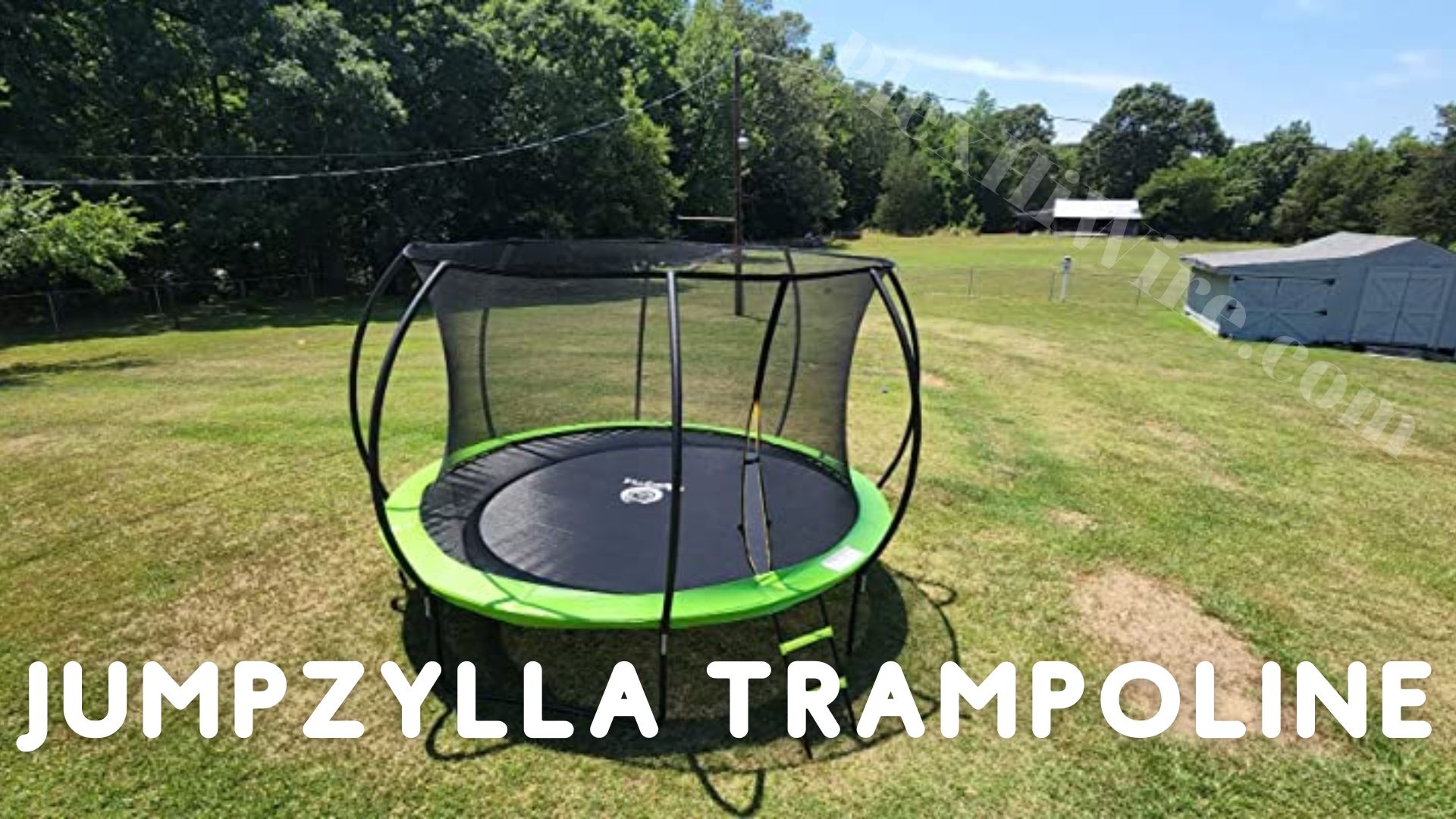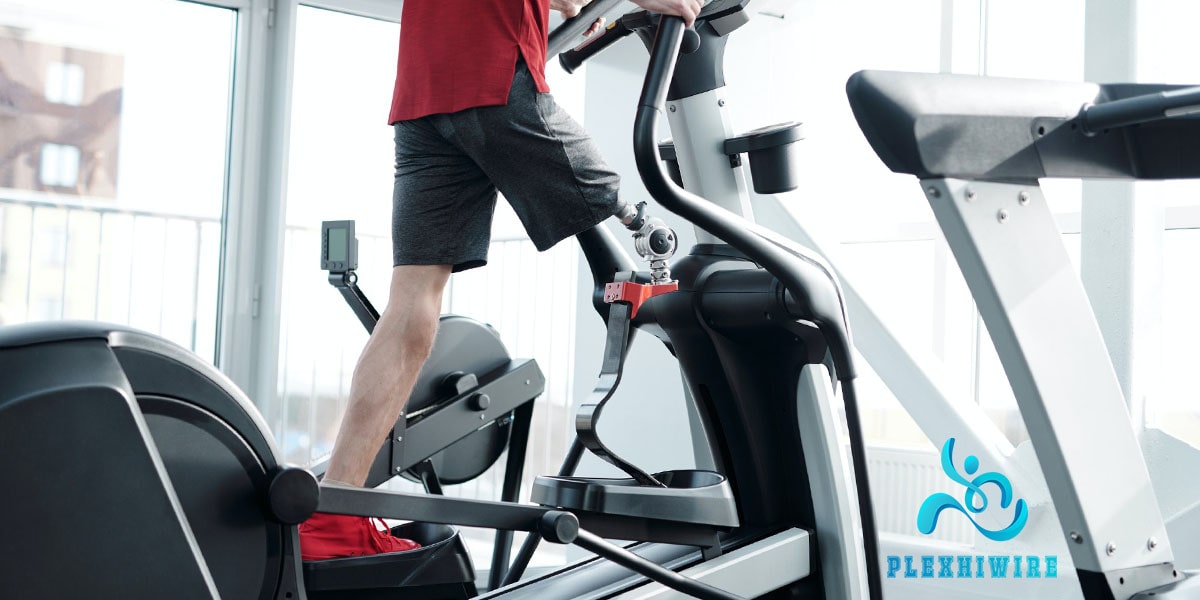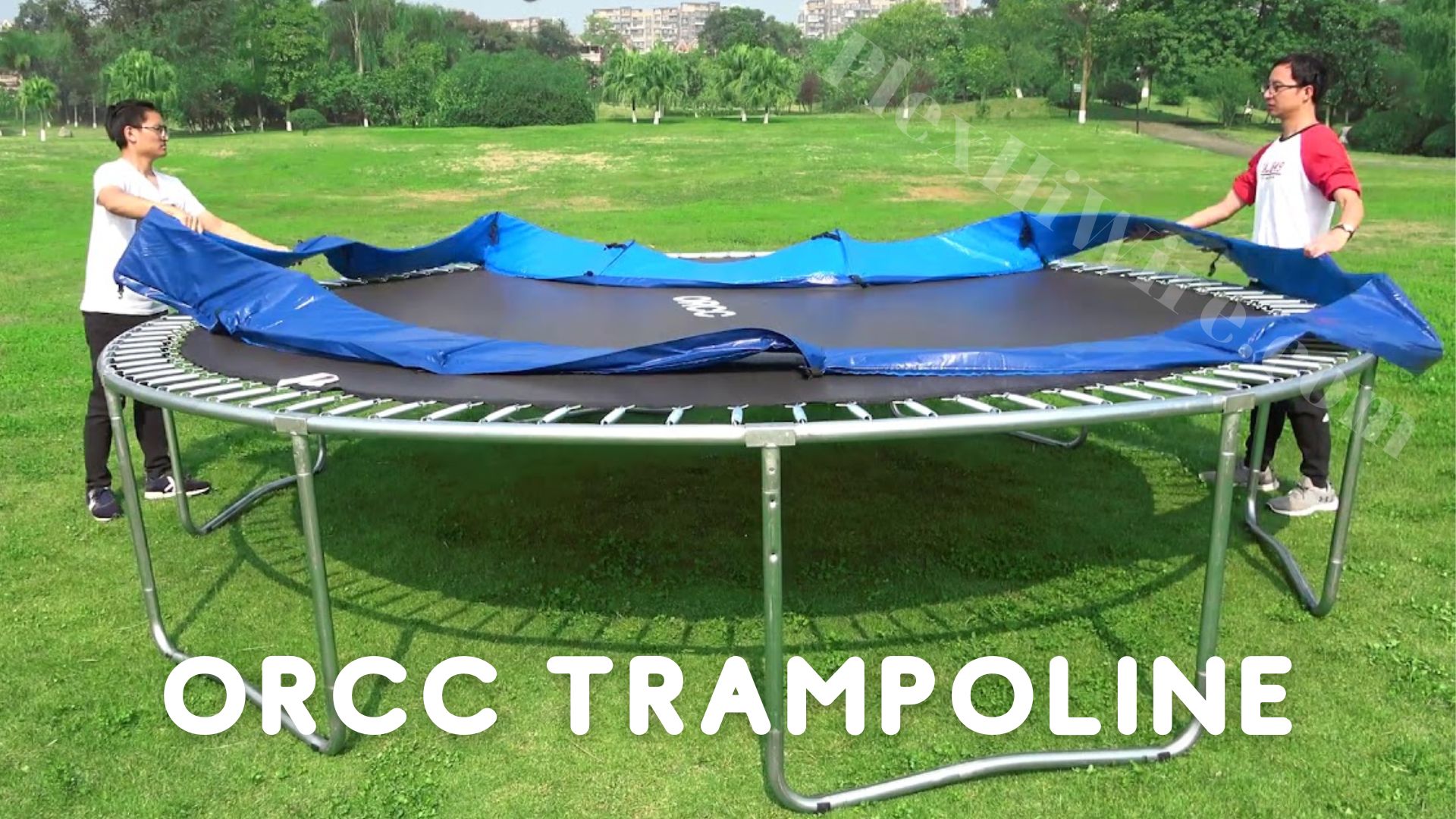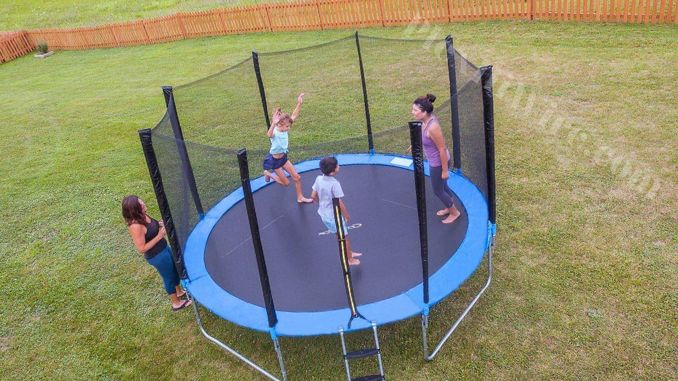What is a Good Treadmill Speed?
Wondering how fast your treadmill should go? You’re not alone. Many people have wondered what the perfect speed is for a treadmill workout. In fact, a study by the Journal of Sports Science and Medicine found that running on a treadmill at different speeds can provide different benefits.
When it comes to working out, there are so many variables to consider: the type of workout, the time of day, and the duration, just to name a few. And when you’re trying to figure out the best treadmill speed for your needs, things can get even more complicated. But don’t worry – we’ve got you covered! In the post “What is a Good Treadmill Speed?”, we’ll outline some tips for finding your perfect speed treadmill and offer a few recommendations based on different types of workouts. So we’ve got you covered whether you’re aiming for a quick jog or an intense cardio session. So keep reading to learn more!
See more: How to Lose 50 Pounds in 3 Months on a Treadmill
- What is a Good Treadmill Speed?
- Treadmill Speed for Beginners
- Treadmill Speed by Age
- What Factors Should You Consider When Choosing a Treadmill Speed?
- What are the Benefits of Running at Different Speeds?
- What is a Good Treadmill Speed for Experienced Runners?
- How Can You Determine What Speed is Best for You When Running on a Treadmill?
- What Speeds are Recommended for People Who are Looking to Improve Their Cardiovascular Health and Overall Fitness Levels?
- How Can You Safely Increase the Speed on Your Treadmill Without Putting Your Health at Risk?
- How Do You Find Your Ideal Treadmill Speed?
- Is There a Limit to How Fast I Can Go on a Treadmill?
- What Speed on a Treadmill is Good for You and Your Workout Routine?
- How to Increase or Decrease Your Treadmill Speed on a Treadmill
- What If You Can’t Run on a Treadmill As Fast As You’d Like?
- Frequently Asked Questions
- Conclusion
What is a Good Treadmill Speed?
There is no one-size-fits-all answer to this question, as the perfect treadmill pace depends on a number of factors, including your fitness level, workout goals, and personal preferences. However, a few general guidelines can help you determine what speed is right for you.
First, it’s important to consider your fitness level. If you’re new to treadmill workouts, starting slow and increasing your speed as you get more comfortable with the machine is best. On the other hand, if you’re an experienced runner or have been doing treadmill workouts for a while, you may be able to handle a higher speed.
Next, think about your workout goals. What are you hoping to achieve with your treadmill workout? A slower, steady pace may be best if you’re looking to build endurance. However, if you’re trying to improve your speed or get in a cardio workout, you’ll want to go a bit faster.
Finally, take your personal preferences into account. Some people prefer a fast-paced, high-intensity workout, while others prefer a slower, more relaxed pace. There is no right or wrong answer here – it’s all about what you enjoy and what works best for you.
With all of this in mind, let’s take a look at a few general recommendations for treadmill speeds based on different types of workouts.
Speed Treadmill Recommendations
Walking: If you’re just starting out or are new to treadmill workouts, a walking speed of 3.0 mph is a good place to start. You can increase your speed as you get more comfortable with the machine and your fitness level.
Jogging: Most people will want to set their speed treadmill between 4.0 and 6.0 mph for a basic jog. Again, this will depend on your fitness level and preferences – some people may be able to handle a faster pace, while others may prefer a slower jog.
Running: If you’re looking for a more challenging workout, you can increase your speed to 8.0 mph or more. This is a good option for experienced runners or those who are looking to improve their speed.
Interval training: Interval training is a great way to mix things up and add some variety to your treadmill workout. For this type of workout, you’ll alternate between high and low intensity periods, with the high-intensity intervals lasting 30 seconds to 1 minute. A good rule of thumb is to start with a 2:1 ratio of high-intensity to low-intensity intervals (e.g., 30 seconds of running at 8.0 mph followed by 60 seconds of walking at 3.5 mph). You can adjust the ratios and speeds based on your fitness level and preferences.
No matter what type of workout you’re doing, it’s important to listen to your body and go at a comfortable pace. If you start to feel like you’re pushing yourself too hard, slow down or take a break. And remember – there is no shame in walking! If you need to take a walking break during your jog or run, that’s perfectly fine. The most important thing is that you are moving your body and getting some exercise.
Treadmill Speed for Beginners
If you’re a beginner on the treadmill, make sure to check with your doctor before starting. You might want to start off slowly, and sometimes that means walking instead of running or being active in some other way like dancing, for example – even if it feels easy going at first! To avoid being too harsh on yourself when trying this new form of exercise, especially since most people need more time adapting than others, try taking small breaks throughout each session by stopping what they’re doing every 5 minutes.
If you’ve been out of shape for a while and need to get back on track with your fitness routine, consider starting off slow. A gentle jog will do wonders! As long as they are lifting their feet off the treadmill at five mph or less. This may seem like just lazy walking, but it’s actually a muscle-building exercise that gets stronger over time if done consistently in small bits throughout each day (and week).
You can mix things up while staying active by adding incline and making the exercise harder. No matter what you choose, doing this will be good for your health as long as it’s consistent! For those who like jogging but haven’t yet developed fitness levels after about six weeks, there are routines available on treadmills that they may enjoy more than running outside in nature or along paths next to roads inches output tone should.
If you are looking to lose weight, then a treadmill will be your best bet. You can also do speed work and interval training, but this depends on what type of results each one produces for different people because there is no set rule. I run five days per week at 5.2mph – it helps me maintain my health while still being able to enjoy the feeling that comes from running without having any negative impact on other aspects, such as fitness levels or time spent living active lifestyles in general so long as they’re balanced out with restful periods throughout each day.
Treadmill Speed by Age
Many studies prove that as we age, our speed and power decrease. This is why 40+ years old don’t compete in athletic competitions like the Olympics or NFL football games; they lose some of their rhythm towards the latter parts of career progression. However, the fact remains: players often retire before reaching 50 due to the slowness associated with getting old!
In my 20’s, I often went at 6+ mph on the treadmill. Now, I’m 46, and my speed is reduced to 5mph–but still enough for an effective workout! Remember: it’s important not only how fast or slow we move but also what pace feels right according to our own bodies, so choose accordingly before starting any run/walk session. I compete against myself every day in life; there isn’t such thing as “speed” competition when you’re taking care of your mental health through fitness goals like these.
Speed is important when it comes to running on a treadmill. However, you should not go so fast that you’re exhausted at the end of your routine, or else be prepared for badminton-like results! An overweight 50 years old male will have different needs from slim females in their late fifties. They may also want something different, like more motivation rather than repetitive exercises, which could lead them towards weight loss goals while still being safe with minimal injury risk.
Several factors can affect your speed, including age. So if you’re 50 years old or older than the average human lifespan and slower due to natural causes like slow-growing cells in our bodies which cause us to decline with time; don’t let anyone else make it seem like there’s some kind of competition going on because as long as one achieves their goals, then they’ve accomplished what really matters most!
What Factors Should You Consider When Choosing a Treadmill Speed?
When choosing a treadmill speed, you should consider your fitness level, workout goals, and personal preferences. For example, if you’re new to treadmill workouts, it’s best to start slow and gradually increase your speed as you get more comfortable with the machine. On the other hand, if you’re an experienced runner or have been doing treadmill workouts for a while, you may be able to handle a higher speed.
Think about what you hope to achieve with your treadmill workout. A slower, steady pace may be best if you’re looking to build endurance. However, if you’re trying to improve your speed or get in a cardio workout, you’ll want to go a bit faster.
Finally, take your personal preferences into account. Some people prefer a fast-paced, high-intensity workout, while others prefer a slower, more relaxed pace. There is no right or wrong answer here – it’s all about what you enjoy and what works best for you.
With all of this in mind, let’s take a look at a few general recommendations for treadmill speeds based on different types of workouts.
What are the Benefits of Running at Different Speeds?
Running at different speeds can offer a variety of benefits depending on your goals. For example, a slower pace may be best if you’re looking to improve your endurance. This allows you to run for longer periods of time without getting too fatigued.
For example, running slowly can help to improve your endurance, while running at a faster pace can help to build speed and agility. Mixing up your running speeds can give your body a more well-rounded workout and reduce the risk of boredom or burnout. Mentally, running at different speeds can also help to keep you motivated and engaged. If you always run at the same pace, losing interest in your workout routine can be easy. However, mixing things up and running at different speeds allows you to keep your mind and body challenged and engaged.
On the other hand, if you’re trying to build up your speed or get in a cardio workout, you’ll want to go a bit faster. This will help you challenge your body and see results more quickly.
Interval training – alternating between high and low intensity periods – is another great option. This type of workout is beneficial because it helps you improve your speed and endurance while adding variety to your routine.
No matter what type of workout you’re doing, it’s important to listen to your body and go at a comfortable pace. If you start to feel like you’re pushing yourself too hard, slow down or take a break.
Ultimately, there are many benefits to running at different speeds, both physical and mental. So next time you hit the pavement, mix things up and see what kind of results you can achieve.
What is a Good Treadmill Speed for Experienced Runners?
If you’re an experienced runner or have been doing treadmill workouts for a while, you may be able to handle a higher speed. A good starting point is 5.5 to 6 mph. From there, you can increase your speed in increments of 0.5 mph.
As you become more comfortable with running on the treadmill, you can continue increasing your speed until you find a challenging but doable pace. Once you reach this point, you can stay at that speed for the duration of your workout.
Remember – there is no shame in walking! If you need to take a walking break during your jog or run, that’s perfectly fine. The most important thing is that you are moving your body and getting some exercise.
How Can You Determine What Speed is Best for You When Running on a Treadmill?
The answer depends on several factors, including your fitness level, age, and desired results. If you are new to running, start by walking at a moderate pace until you build up your endurance. Once you are comfortable running for long periods of time, you can gradually increase your speed. If you are older or have health concerns, it is important to consult with a doctor before starting a new exercise routine. They can help you determine what speed is safe for you based on your individual needs. Ultimately, the best way to find the perfect speed is to experiment and listen to your body. Start with a slow speed and increase the treadmill pace until you find a comfortable rhythm that challenges you without being too strenuous.
The best way to determine what speed is best for you is to experiment and find a pace that feels challenging but doable. Start by walking on the treadmill at a comfortable pace. From there, you can gradually increase your speed in increments of 0.5 mph until you reach a point where you feel like you’re pushing yourself.
Once you find this point, you can stay at that speed for the duration of your workout. Remember – there is no shame in walking! If you need to take a walking break during your jog or run, that’s perfectly fine. The most important thing is that you are moving your body and getting some exercise. If you are trying to improve your performance, you will need to experiment with different speeds to find the one that gives you the best results. Ultimately, the best way to determine the perfect speed for you is to experiment and see what works best for your body.
What Speeds are Recommended for People Who are Looking to Improve Their Cardiovascular Health and Overall Fitness Levels?
Cardiovascular health is essential for overall fitness and well-being. There are several different ways to improve cardiovascular health, but one of the most effective is to exercise at a moderate intensity for at least 30 minutes per day. Moderate-intensity exercise includes activities such as walking, jogging, and swimming. These activities can help to raise the heart rate and promote blood circulation. In addition, several different speeds can be beneficial for people looking to improve their cardiovascular health and overall fitness levels. For example, a slow pace can help increase endurance and build stamina, while a more moderate pace can help burn calories and improve heart health. For people who are already fairly fit, a faster pace may be necessary to see further improvements.
Ultimately, the best speed for each individual will depend on their fitness level and goals. However, by gradually pushing themselves to go faster or farther, people can slowly improve their fitness levels and reach their desired goals. People who are just beginning an exercise program should start slowly and gradually build up to the recommended level of intensity. In addition, it is important to consult with a physician before starting any new exercise regimen. By following these guidelines, people can improve their cardiovascular health and overall fitness levels.
See more: Couch to 5k Plan Treadmill
How Can You Safely Increase the Speed on Your Treadmill Without Putting Your Health at Risk?
Increasing the speed on your treadmill is a great way to challenge yourself and see results. It is generally safe to increase the speed of your treadmill by 1-2 mph each week. However, it’s important to do so safely in order to avoid injuries. Here are a few tips:
- Start by gradually increasing the speed in small increments. This will help your body adjust and avoid any sudden jolts.
- Pay attention to your form and make sure you’re running with proper alignment.
- Be mindful of how your body is feeling; if you start to experience any pain or discomfort, slow down or stop entirely.
Lastly, be sure to warm up before increasing the speed and cool down afterwards. Following these simple tips, you can safely push yourself on the treadmill without risking your health.
How Do You Find Your Ideal Treadmill Speed?
You should keep a few things in mind when trying to find your ideal treadmill speed. First, consider the type of workout you’re looking for. For example, a lower speed is probably best if you’re aiming for a quick jog or light walk. On the other hand, if you’re hoping to get in a more intense cardio workout, a higher speed is likely what you’re after.
You should also think about the time of day and how much energy you have. For example, if you’re working out first thing in the morning, you might not be able to (or want to) go as fast as you would later in the day. And finally, consider the duration of your workout. If you’re short on time, you might opt for a higher speed so you can get in a good workout, even if it’s shorter than usual.
Consider all these factors when trying to find your ideal speed treadmill. And if you’re still not sure, start with a lower speed and work your way up. You can always adjust as you go!
A few recommendations…
Now that we’ve gone over some tips for finding your perfect treadmill speed, let’s look at a few recommendations.
If you’re looking for a quick jog or light walk: Start at a slow pace, around 3-4 mph. If you’re feeling good and have the energy, you can always pick up the pace as you go.
If you want a more intense cardio workout: Start at a moderate pace, around 5-6 mph. Again, you can always increase the speed if you’re feeling good.
Keep in mind that these are just general recommendations – ultimately, you should go with whatever speed feels comfortable for you. And remember, you can always adjust as needed!
Is There a Limit to How Fast I Can Go on a Treadmill?
When it comes to treadmill speed, there are factors that can influence the limits at which you can safely and effectively workout. A significant aspect to consider is the treadmill’s technical specifications, as different models have varying maximum speeds. For instance, a common speed range for home-use treadmills is roughly 10-12 mph, while commercial-grade models can go as high as 15-20 mph. Additionally, a critical aspect to factor in is your personal fitness level, since attempting to run or walk at a treadmill speed to pace too fast for your abilities could lead to potential injuries or exhaustion. It’s always advisable to gradually increase speed treadmill over time, allowing both your body and cardiovascular system to adapt and improve. Lastly, consulting with a fitness professional could help determine your optimal training speed on a treadmill, taking into account your health background, goals, and personal limitations.
What Speed on a Treadmill is Good for You and Your Workout Routine?
The answer to this question depends on what type of workout you’re looking to do. A slower speed may be more appropriate if you’re simply trying to get in some light cardio. However, if you’re looking for a more intense workout, a higher speed may be what you need. Ultimately, it’s important to find a speed that is comfortable for you and that allows you to maintain good form throughout your workout.
Here are a few tips to help you find the perfect speed treadmill:
- Start slow and gradually increase your speed as you get comfortable with the treadmill.
- Pay attention to your form and make sure you’re not slouching or hunching over.
- If you start to feel fatigued, slow down or take a break.
- Experiment with different speeds and see what feels best for you.
Keep these tips in mind as you experiment with different treadmill speeds. And remember, there is no one “perfect” speed. The key is to find a speed that works for you and your individual workout goals.
How to Increase or Decrease Your Treadmill Speed on a Treadmill
Most treadmills have a speed adjustment knob or button that you can use to increase or decrease the belt’s speed. If your treadmill has a knob, turning it to the right will increase the speed, while turning it to the left will decrease the speed. If your treadmill has a button, you will usually need to press and hold the “+” button to increase the speed, and press and hold the “-” button to decrease the speed. You can also typically adjust the speed in increments of 0.1 mph or 0.2 km/h. Some treadmills also have a “quick start” feature that allows you to increase the speed in increments of 1 mph or 2 km/h. To use this feature, you will usually need to simultaneously press and hold down the “+” and “-” buttons. In addition, if you need to stop abruptly, hit the “stop” button on the control panel. Again, there is start with a slow speed and gradually increases as you get comfortable.
Now that you know how to properly adjust your treadmill running speed, let’s take a look at some recommendations for different types of workouts.
Speed Treadmill Recommendations
Here are some general guidelines for finding your perfect speed treadmill:
- Aim for a warm-up or cool-down, at a slow pace of 2-3 mph.
- Aim for a pace of 3-4 mph for an easy run or walk.
- Aim for a speed of 4-5 mph at a moderate pace.
- At a fast pace, aim for a speed of 6-8 mph.
- For an all-out sprint, aim for a speed of 9+ mph.
Keep in mind that these are just general guidelines – ultimately, you should go at whatever pace feels comfortable for you. And if you need to stop and take a break, that’s totally fine! Just hit the “stop” button on the control panel and take a few deep breaths. Then, you can start again at a slower pace if you need to.
Choosing the perfect treadmill speed can be tough, but we hope that these tips have helped! Just remember to start slow and gradually increase your speed as you get comfortable. And if you need to stop for a break, that’s totally okay – just hit the “stop” button on the control panel. Happy running!
What If You Can’t Run on a Treadmill As Fast As You’d Like?
Don’t worry – you’re not the only one. In fact, most people find that they can’t maintain the same pace on a treadmill as they can outdoors. The good news is that you can do a few things to overcome this. First, make sure that you warm up properly before starting your treadmill session. A light jog or brisk walk will help to get your muscles loose and ready to go. Second, start out slowly and gradually increase your speed. Finally, it’s important to listen to your body and not push yourself too hard.
You can also try increasing the treadmill’s incline to make it more challenging. Or, you could try interval training, which involves alternating between high and low intensity periods. Interval training is a great way to challenge your body and burn more calories in a shorter amount of time. And if you’re really looking for a challenge, you can always try running uphill on the treadmill!
Finally, don’t be afraid to change your routine. If you find yourself getting bored, try adding some hills or interval training to mix things up. With a little effort, you’ll be able to run at the pace you want in no time.
Frequently Asked Questions
What is a Good Speed to Walk on a Treadmill to Lose Weight?
The answer to this question depends on several factors, including your fitness level, weight, and the treadmill’s incline. Generally speaking, walking at a speed of 3-4 mph is considered a moderate pace that can help you burn calories and lose weight. If you’re new to exercise, you may want to start at a lower speed and gradually work your way up. Likewise, if you’re trying to lose significant weight, you may need to increase your speed or incline to see results. Ultimately, the best way to determine the right speed for you is to experiment and find what feels comfortable and challenging. Remember to warm up before increasing your speed and cool down after your workout.
Is 10 a Good Treadmill Speed?
This is a question that many people ask when they are starting to use a treadmill. The answer may vary depending on the person’s individual fitness goals. For instance, if someone is training for a marathon, they may want to run at a faster pace than someone who is using the treadmill for general cardio exercise. However, 10 miles per hour on a treadmill is considered to be a relatively fast pace. In addition, it is worth noting that most treadmills have an emergency stop button that can be used if the person begins to feel fatigued or in pain. Therefore, it is important to listen to one’s body and not push oneself too hard when using a treadmill.
How Fast is 7.0 on a Treadmill?
The answer to this question depends on a few factors, including the type of treadmill, the size of the belt, and the user’s own personal speed and stride. Generally speaking; however, 7.0 miles per hour on a treadmill is considered to be a relatively fast pace. This pace is equivalent to an 8-minute mile, and it would take most people between 30 and 60 minutes to complete a full mile at this speed. Some people can sustain this pace for long periods, but for most people, 7.0 miles per hour is only sustainable for short bursts. So if you’re looking to get a good workout on the treadmill, aim for a pace of 7.0 miles per hour. You may not be able to sustain it for very long, but you’ll definitely get your heart rate up!
Conclusion
So, what is a good treadmill speed? It depends on your goals. If you’re looking to improve your cardiovascular endurance, aim for a pace that makes you work hard but doesn’t leave you breathless. If weight loss is your goal, shoot for a faster pace that will get your heart rate up and make you sweat. In either case, start slowly and build up over time. And always listen to your body – if something feels off, back off the speed or take a break.
I think a good speed treadmill for beginners is around 2-3 mph. This will help your body get used to the movement and prevent any injuries. As you progress, you can gradually increase your speed. Always listen to your body and be mindful of how you’re feeling. If something doesn’t feel right, stop immediately and consult with a doctor. We hope the article “What is a good treadmill speed?” has helped you figure out what speed is right for you and given you some ideas on how to reach your fitness goals.








